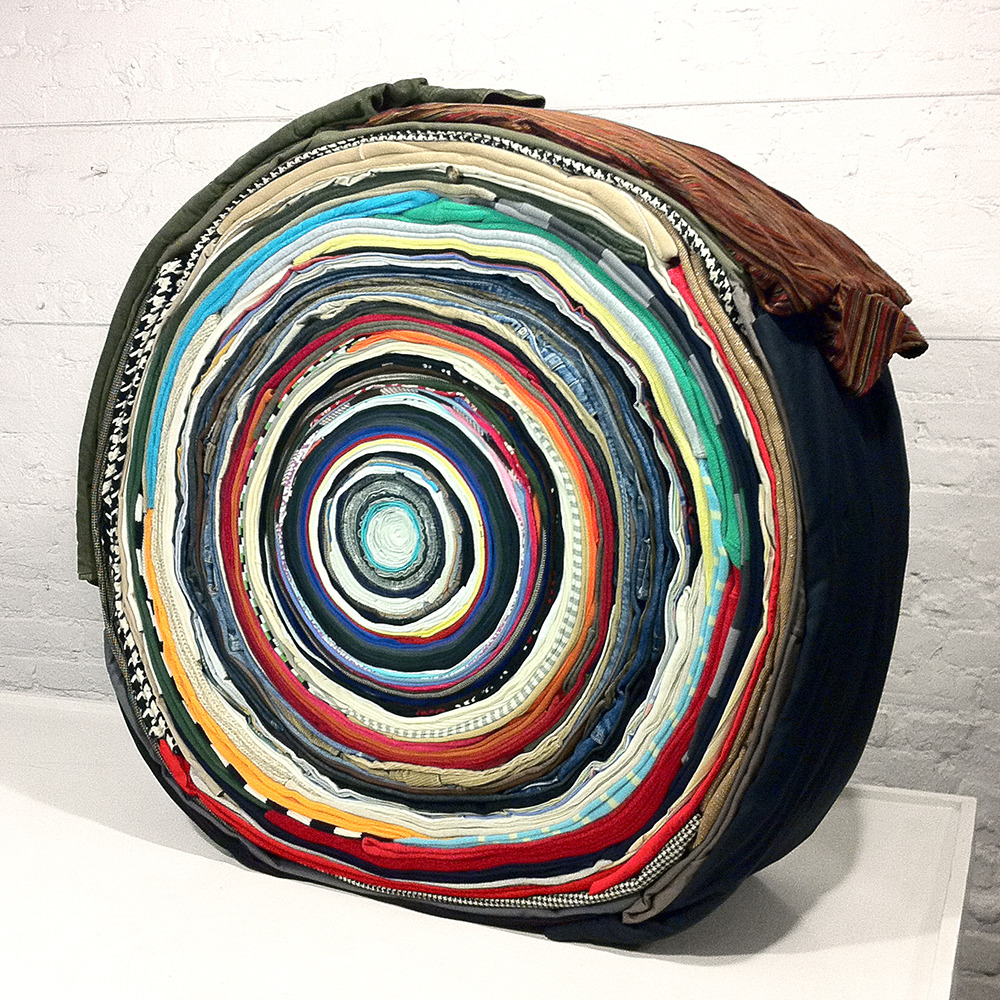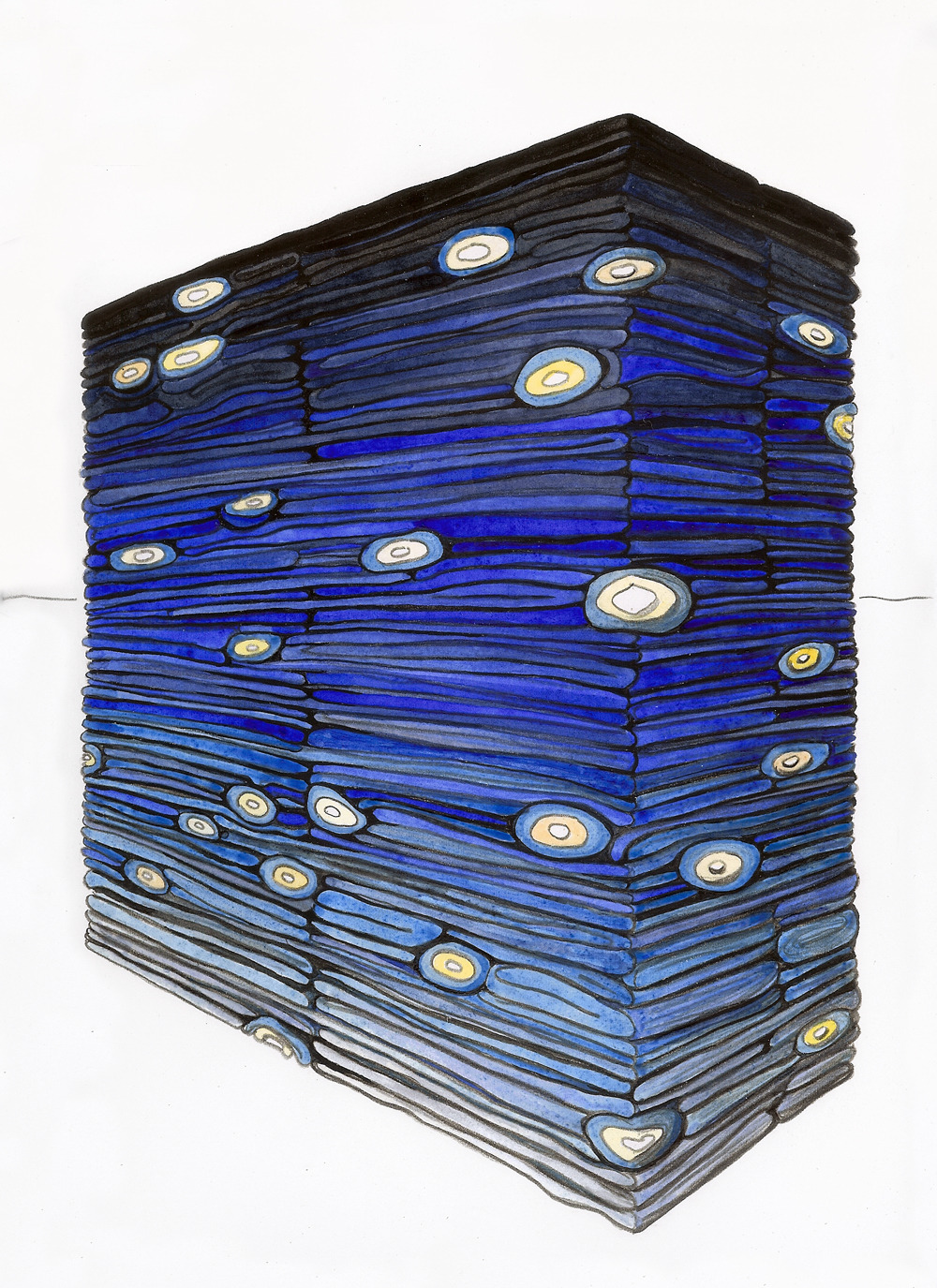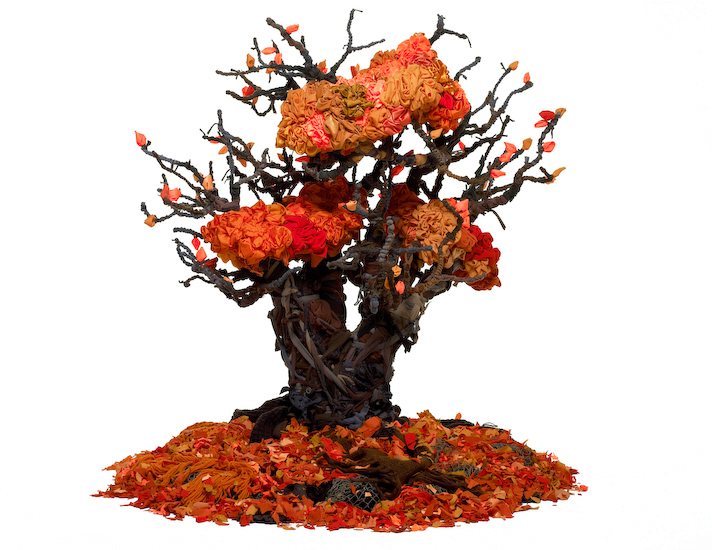Yin Xiuzhen
| 1963 | Born in Beijing |
| 1985-89 | Majored in Oil Painting at the Fine Arts Department of Capital Normal University, Beijing Lives and works in Beijing, China |
Selected Solo Exhibitions | |
| 2012 | Yin Xiuzhen, Groninger Museum, Groningen, Netherlands |
| Yin Xiuzhen, Kunsthalle Düsseldorf, Düsseldorf, Germany | |
| 2011 | ONE SENTENCE | ALEXANDER OCHS GALLERIES BERLIN | BEIJING, Berlin, Germany The Way of Chopsticks II - Sond Dong + Yin Xiuzhen, Chambers Fine Arts, New York, USA |
| 2010 | Second Skin, Pace Beijing, China |
| Projects 92: Yin Xiuzhen, (Elaine Dannheisser Project Series) The Museum of Modern Art, New York, USA | |
| 2009 | Yin Xiuzhen, Anna Schwartz Gallery, Sydney, Australia |
| 2008 | COMMUNE, Galerie WELTECHO, Chemnitz, Germany |
| 2007 | 52. La Biennale di Venezia, Pavilion of the PR China, (together with Shen Yuan, Kan Xuan, Cao Fei), Curator: Hou Hanru |
| 2006 | Yin Xiuzhen and Song Dong: Restroom M / Restroom W, Gallery at Redcat, Los Angeles, USA International Airport Terminal 1, ALEXANDER OCHS GALLERIES BERLIN | BEIJING, Berlin, Germany |
| 2003 | Present | Future, Artissima Turin, ALEXANDER OCHS GALLERIES BERLIN I BEIJING (former PRÜSS & OCHS), Berlin, Germany |
| 2002 | "chopsticks: song dong and yin xiuzhen", videos, installations and event, Chambers Fine Art, New York, USA |
Selected Group Exhibitions | |
| 2012 | CAR CULTURE, Lentos Kunstmuseum Linz, Austria |
| STRUGGLE(S), Maison Particulière Art Center, Brussels, Belgium | |
| 2011 | Yokohama Triennale 2011, Yokohama Triennale. Medi(t)ation - Asian Art Biennial, National Taiwan Museum of Fine Arts, Taichung, Taiwan Our Magic Hour, Yokohama International Triennale of Contemporary Art, Japan Car Culture, ZKM – Zentrum für Kunst und Medien, Karlsruhe, Germany Trans/Formations: THE CITY, SPACES AND TIMES, AlhondigaBilbao, Spain |
| 2010 | Beijing Time | La hora de China, Casa Asia, Madrid, Spain |
| Dreamlands, Centre Pompidou, Paris, France | |
| 11th Fellbach Triennale, Stadt Fellbach - Kulturamt, Germany | |
| BALMORAL BLEND - 15 Jahre Künstlerhaus Schloss Balmoral, Arp Museum Bahnhof Rolandseck, Remagen, Germany | |
| 2009 | Sit In China, Museum für Angewandte Kunst Frankfurt, Frankfurt am Main, Germany Strange World, Blackburn Museum & Art Gallery, Blackburn, UK The Big World. Recent Art from China, Hall and Yates Gallery, Chicago, USA Mahjong: Contemporary Chinese Art from the Sigg Collection, Peabody Essex Museum, Salem, Massachusetts, USA |
| 2008 | Fear, Allsopp Contemporary & Wedel Fine Art, London, Great Britain Mahjong: Contemporary Chinese Art from the Sigg Collection, University of California, Berkeley Art Museum & Pacific Film Archive, Berkeley, USA 7th Shanghai Biennale. Curators: Julian Heynen and Henk Slager, Shanghai, China Under The Sky, WHITE SPACE BEIJING, Beijing, China Die Wahren Orte, ALEXANDER OCHS GALLERIES BERLIN I BEIJING, Beijing, Germany ALL-INCLUSIVE - A TOURIST WORLD, Schirn Kunsthalle, Frankfurt a.M., Germany |
| 2007 | CHINA-FACING REALITY, MuMok, Wien CHINA NOW, Works from the Essl Collection, CoBrA museum, Amstelveen, Netherlands GLOBAL FEMINISMS, Brooklyn Museum, New York, USA |
| 2006 | Mahjong – Chinesische Gegenwartskunst aus der Sammlung Sigg, Kunsthalle Hamburg, Germany Between Past and Future: New Photography and Video from China, Haus der Kulturen der Welt, Berlin, Germany; Santa Barbara Museum of Art, Santa Barbara, California, USA |
| 2005 | Asian Traffic, Today Art Museum, Beijing |
| 2004 | 26th Sao Paolo Biennial, Brazil |







































 INDRADHANUSH 2008
INDRADHANUSH 2008
 OASIS 2006
OASIS 2006 FALL 2003
FALL 2003 DUELING SNAKES 2006
DUELING SNAKES 2006

 BARBED 6
BARBED 6

